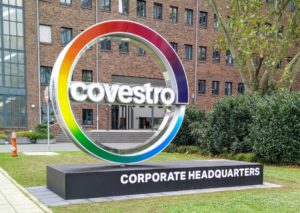 Covestro has introduced a new range of resins, filaments and powders to supply every common type of 3D printer. The company hopes it can drive the industry and bring mass manufacturing to the 3D printing world with a range of high-quality products that can supply this generation of printers and the next.
Covestro has introduced a new range of resins, filaments and powders to supply every common type of 3D printer. The company hopes it can drive the industry and bring mass manufacturing to the 3D printing world with a range of high-quality products that can supply this generation of printers and the next.
High-quality filaments are one of the main hurdles on the way towards mass manufacturing, although it is far from the only issue. Print speed, resolution and a raft of other issues are holding us back as an industry, but we’re getting there. If the likes of Covestro can fix the material science side, then it will be a major step towards this Utopian vision.
The company has opened a 3D printing laboratory at its HQ in Leverkusen, Germany. Here it will cook up the next generation of filaments and additive manufacturing materials with the help of its partners.
Covestro has a number of different Fused Filament Fabrication materials, including flexible thermoplastic polyurethane. This is a popular material in the automotive and footwear industries, thanks to its high abrasion resistance and elasticity. It also produces a more rigid polycarbonate, with the help of Polymaker. The resulting filament is said to offer excellent toughness and stability.
Lighting manufacturers, designers and other industries are queuing up to try this new material that can withstand high temperatures and should provide a sturdy and durable product. The surface finish is what will mark this material apart, though. If it can provide a match for mass manufactured goods, then it could help boutique designers create high-end products and eventually make it to a large-scale production line.
Covestro also offers TPU powders that offer a number of other advantages over other materials when it comes to Selective Laser Sintering. It is generally considered to be stronger and more elastic than alternatives, so these powders are sure to find a home in the industrial sector that is working hard on SLS. It has potential to become a genuine mass manufacturing technique, but poor surface finish and porosity of the prints have presented problems. Higher quality base materials could certainly be one answer.
The machines will have to improve, there is no way that the materials are going to fix every issue on their own. But with developments on both sides of the fence then we could see progress sooner rather than later.
The company is also working on materials for use in stereolithography, digital light process and inkjet printing. It is not simply working on consistent and high quality materials. It intends to offer resins tailored to specific tasks.
It will use specific recipes of isocyanates, polyols and resin to create gradient materials that could potentially make 3D printing much more attractive for certain tasks. The industry is crying out for new compounds and this is definitely a step in the right direction.
We’re glad that Covestro has gone all-in on these next-gen materials and we are sure we are going to see great results from the Leverkusen lab. We’ll be watching closely.


